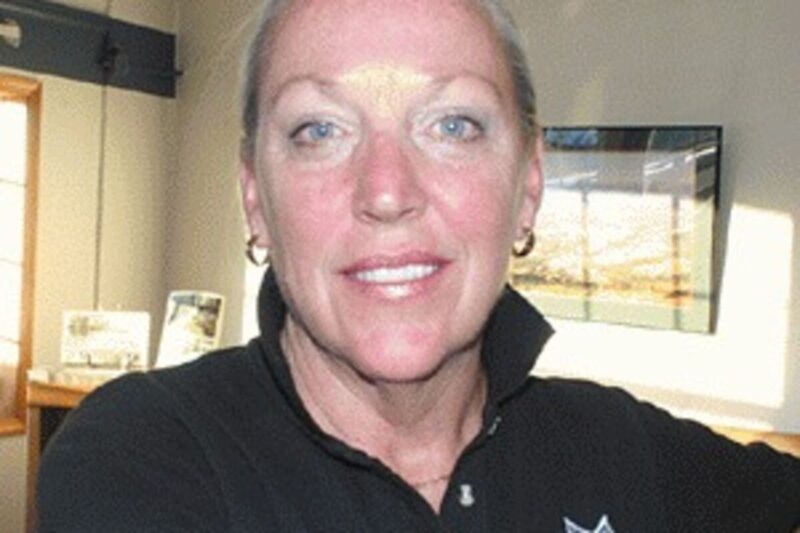Sean C. Morgan
(This is the second in a three-part series on how local residents are stepping up to combat crime.)
Of The New Era
Neighbors in Sweet Home commonly keep an eye out for each other, but the Neighborhood Watch program goes many steps further in combatting neighborhood crime problems.
In Neighborhood Watch, residents become the “eyes and ears for law enforcement,” said Jo Ann McQueary, coordinator for the program.
“I firmly believe that this is one of the most important programs in my office,” Sheriff Tim Mueller said in the introductory literature for the program. “We will never have enough deputies to satisfy our community needs, but we can accomplish a great deal by working partnership with our citizens.”
“Usually people wait until there’s been a crime in their neighborhood before getting themselves organized,” McQueary said. Organizing before crime becomes a big issue is a good idea, but it can also help clean up a neighborhood.
McQueary points to Mountain Shadows Mobile Home Park as an example in which Neighborhood Watch has helped clean up a neighborhood.
“Neighborhood Watch is so valuable in so many ways,” she said. In the Liberty area, a resident on Scott Mountain got “sick of it” a year and a half ago. She and her neighbors banded together and started a Neighborhood Watch program. They used code enforcement and communicated with judges and commissioners, not just law enforcement, to get a drug dealer out of the area.
“People have to want to do their part,” McQueary said. The days of law enforcement solely protecting citizens are over, she said.
Neighborhood Watch groups can provide information to residents about how to secure their property, including identifying it and inventorying it, McQueary said. The program teaches residents about “suspicious activity, what it is and exactly how to report it, getting all the details we tend to miss because we’re not trained observers.”
Neighbors become more aware, and they might be able to provide the one key piece of information police are looking for to break up a whole theft ring.
McQueary can cite example after example of how Neighborhood Watch has benefited neighorhoods, she said. It goes beyond tips on how to secure property and prevent crime.
“It’s not just the information to police,” she said. “They have information to give us.”
Within the last year, the Strawberry Heights Neighborhood Watch group helped locate a missing child based on police information, she said.
“We have information that we like to get to neighbors also,” McQueary said. “When I know there’s a mail theft increase in a certain area, I’m going to let them know.”
Neighborhood Watch groups do not need to meet regularly, like Mountain Shadows; but they do need to stay connected, McQueary said. Typically, watch groups set up “telephone trees” to improve communication and practice using them so they don’t break when they’re used.
After a theft, a neighbor can call another neighbor and get the phone tree rolling. Other neighbors may have seen something or know something that might help return the stolen property.
Linn County has formed a Neighborhood Watch Council, and through it McQueary is able to keep up with all of the watch groups as well as organize countywide information sessions.
In December, after the homicide at Larwood Park, police had a good idea of who the suspect might be even before the victim’s body was identified, McQueary said. Police got a wanted poster out, but the suspect had been out of prison for eight months. The photo on the poster was out of date and not an accurate likeness.
However, they didn’t have any trouble distributing the posters.
“I was able to easily organize those Neighborhood Watch groups,” McQueary said. “These folks stepped up, no questions asked” and saturated the county with the posters. The Neighborhood Watch groups stepped up again when the second, more accurate, wanted poster was finished.
“Anywhere he went or his friends went, his face was up,” McQueary said of the suspect. Every person she contacted to put up posters did it, and it was the afternoon of Christmas Eve.
Setting up a program typically requires a “first meeting” to introduce the community service officer, someone like McQueary. During the meeting, the group begins organizing, putting together a list of names, addresses, phone numbers and vehicle descriptions, sharing all kinds of information with neighbors.
Watch coordinators maintain a list of participating neighbors and act as liaisons with members, police officers, civic groups and block captains. They arrange training programs and distribute information and materials, such as stickers and signs. They involve others to develop specific crime prevention projects and encourage participation in “Operation Identification,” a nationwide program in which personal property is marked for identification later if it is lost or stolen.
Block captains are designated for every 10 to 15 houses and are directly involved with neighbors. They act as a liaison between residents and the coordinator. They establish phone trees by compiling lists of names, addresses and phone numbers. They visit and invite new residents to join Neighborhood Watch and maintain contact with block residents.
It’s not hard to get a Neighborhood Watch program started, McQueary said. “Call me.”
She can be reached by calling (800) 884-3911 or by e-mail at [email protected].





